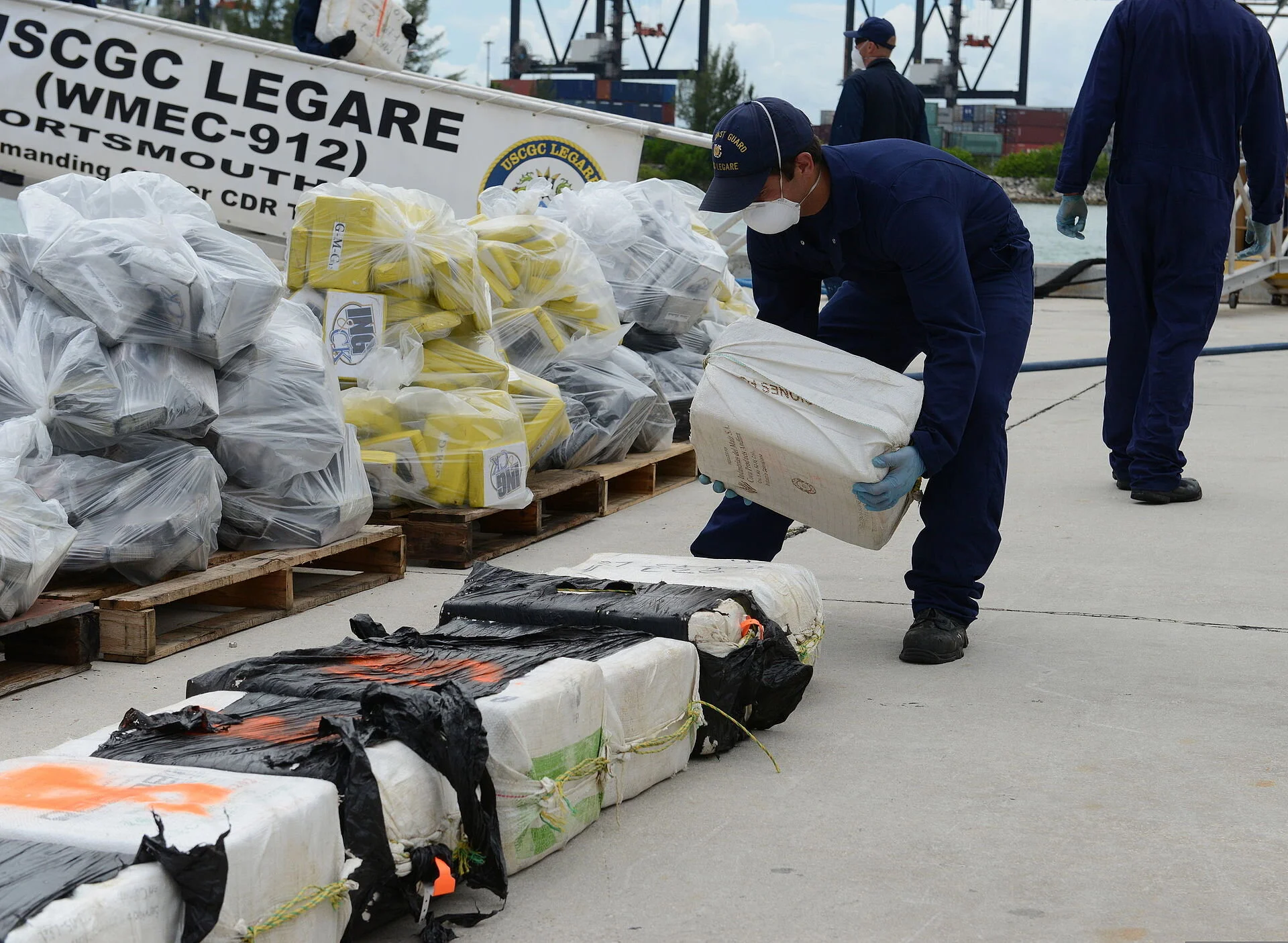Unprecedented Drug Seizures in Southeast Asia Show COVID-19 May Have Shifted Where the World Makes Narcotics
By: Will Reynolds
A U.S. Coast Guardsman assigned to the medium endurance cutter USCGC Legare (WMEC 912) stacks a bale of cocaine seized as part of Operation Martillo at Coast Guard Base Miami Beach, Fla., Sept. 4, 2014. Operation Martillo is a joint, interagency and multinational collaborative effort to deny transnational criminal organizations air and maritime access to the littoral regions of the Central American isthmus. Photo by PO3 Mark Barney
Louisville —The COVID-19 pandemic and subsequent global lockdowns have led to significant shifts throughout the global illegal drug supply chain. Despite these challenges, recent seizures have yielded evidence of increased methamphetamine and the first evidence of synthetic opioid production in Southeast Asia. The global lockdown has increased the difficulty for traffickers to export their products globally, however, large seizures and decreased prices across the Southeast Asia and Pacific regions points to significant increases in production and supply.
Recent months have yielded some of the largest drug busts in Southeast Asia’s history, many in a region known as The Golden Triangle.
The Golden Triangle is a mountainous area of approximately 150,000 square miles where the borders of Laos, Myanmar, and Thailand meet. Now the second largest opium-producing country in the world behind Afghanistan, Myanmar, in the 1990s grew more than half of the world’s opium.
Jeremy Douglas, a Representative for The United Nations Office on Drugs and Crime (UNODC), commented on the developments observed in the region, “Production is known to migrate into places with deep governance problems like the Golden Triangle, and we are concerned Southeast Asia could become a source for other parts of the world.”
A joint operation between UNODC and Myanma forces seized 193 million meth tablets, 3,700 liters of methyl fentanyl, and guns in the raid that resulted in the arrest of 33 Burmese and foreigners involved in the operation.
Not only was this amount of methamphetamine almost equal to the amount seized by authorities in Myanmar over the past two years, this bust indicated the first evidence of significant synthetic opioid production in the region. Easier to produce and smuggle, fentanyl and synthetic opioids are not only cheap, but are extremely potent, and responsible for a large amount of deaths throughout the United States, who has struggled in recent years with an endemic opioid crisis.
On top of recent activity in the Golden Triangle, earlier last week, the Philippine Drug Enforcement Agency also had a significant seizure of 756 kilograms of methamphetamine, with a street value in the Philippines of more than $100 million.
This haul proves to be the largest since the first year of President Duterte’s time in office, a time most well-known for his harsh campaign against drug use and trade. While Duterte’s harsh drug policy is supported by more than 80% of Filipinos, the campaign has garnered international condemnation, particularly because this campaign has resulted in the murders of more than 12,000 suspected drug users and dealers in just 4 years.
In response to the seizure, President Duterte warned all potential groups involved in the region’s drug trade, stating "If you destroy my country (by) distributing 5.1 billion pesos worth of shabu... I will kill you.”
While countries such as Myanmar and Thailand have begun significant campaigns against drug production and trafficking, Preisdent Duterte’s violent anti-drug policies continues to garner criticism. A recent United Nations report, prepared by Michelle Bachelet, the United Nation's High Commissioner for Human Rights, went to the extent of declaring that recent government statements had "risen to the level of incitement to violence."
The increased production of synthetic opioids and the cheap prices of methamphetamines and synthetic alternatives have heightened concern for increased opioid abuse and overdoses throughout Southeast Asia and the Pacific.
Recent events have only heightened concern for the Southeast Asian region’s growing methamphetamine crisis. With the UNODC describing the region as “the world’s largest and most dynamic” methamphetamine market, nations will have to work together at unprecedented levels to combat the $61 billion industry.

